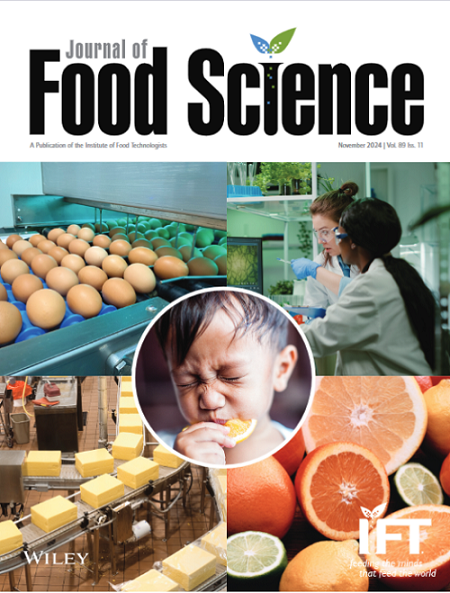The effects of post-harvest pretreatments and drying methods on in vitro bioaccessibility of phenolics and carotenoids in tomato (Solanum lycopersicum) cultivars
Abstract
Two pretreatments (ultrasound sonication [US] and microwave [MW]) and drying techniques (hot air [HA] and freeze-drying [FD]) were used to assess the in vitro bioaccessibility of phenols, carotenoids, and antioxidant activity in three tomato cultivars (Zzx171, Zzx162, and Zzx65). The metabolome-chemometric analysis showed that tomato cultivars dried by FD and HA differed in metabolites. HA samples contained methoxytyrosine and aconitane-type diterpenoids. US-HA enhanced total phenol content bioaccessibility by 64.72%–74.25% in three tomato cultivars after digestion (intestinal phase). US-HA increased the protocatechuic acid levels in all three tomato cultivars in the intestinal phase, but by 55.23% in Zzx65 compared to the undigested samples. Despite all adopted postharvest pretreatments and drying, US-HA retained chlorogenic acid, 4-O-caffeinyliquinic acid, and rutin better, due to microstructure changes in the intestinal phase, and Zzx65 treated with US-HA retained the most. In undigested samples, US-FD improved total carotenoids, lycopene, and β-carotene retention, but the inaccessibility was reduced significantly during in vitro digestion. Cultivar × postharvest treatment affected all phenolic compounds, carotenoids, and antioxidant activities in the intestinal phase. US-HA had improved antioxidant power (FRAP) and 3-ethylbenzothiazoline-6-sulfonic acid (ABTS) scavenging activity in the intestinal phase.
Practical Application
Tomatoes are an important part of the human diet. Their high perishability reduces their nutritional and microbiological quality. The lack of cold storage infrastructure in developing countries contributes to food waste. Convective hot air drying is suitable for recycling fresh market waste products as supplement powders. The ultrasound pretreatment protects bioactive compounds in tomato fruit and is non-thermal. There are several limitations, including equipment cost, energy efficiency, and integration with commercial systems, which limit ultrasound-assisted drying's scalability. The integration of US-HA treatment (ultrasound-assisted hot air drying) could reduce food waste and contribute to the sustainable development goals in agricultural industries.


 求助内容:
求助内容: 应助结果提醒方式:
应助结果提醒方式:


